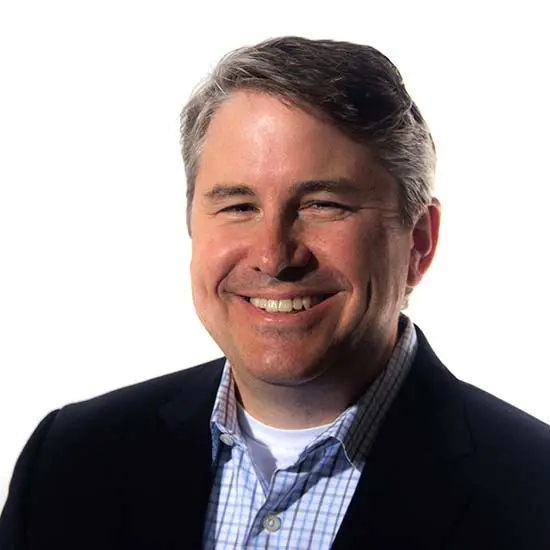
Investing in real estate is one effective way to achieve portfolio diversity and grow wealth that can be passed on to younger family members. With today’s proptech landscape, now more than ever, investors can dabble in all forms – residential, multifamily, commercial – all on single platforms for long term wealth in variable markets.
Nationally, the share of investor purchases among all home sales increased year over year by just over 40% in the third quarter of 2021, based on ATTOM data of single-family home sales purchased by investors as both fix-and-flip properties and long-term rentals.
One company in particular, Realized, is helping investors leverage the property market by housing real estate and wealth management tech under one roof. Its goal is to manage investment property wealth with the same discipline as stocks, bonds, or other traditional asset classes.
Investors can also use the Realized platform to transfer wealth from legacy properties and assets into passive commercial real estate portfolios – comprised of Delaware Statutory Trusts (DSTs) and Qualified Opportunity Zone (QOZ) investments that are fully customizable.
Realized’s niche lies in its ability to maximize tax benefits over the long term through investors’ properties via 1031 exchanges as a launchpad.
The company was founded at the end of 2015 with co-founders David Wieland, now CEO, and David Dahill, CFO, at the helm. The pair had previously launched five companies together – always at the intersection of tax and commercial real estate that evolved into structured finance and now technology.
Just a week ago, the company revealed it had exceeded $1 billion in total real estate investments purchased on behalf of individuals through its platform. Following the announcement, FinLedger sat down with Wieland to discuss the company’s projected success, the benefits of building wealth through property and the opportunities investors can find in hedging the current market.

FinLedger: Take me back to six years ago to the founding of Realized. What market issue were you trying to solve, and what was the idea behind building this wealth management platform?
David Wieland: Turns out, some of the simplest ideas are the best ones.
There is an enormous group of people in the United States who are building wealth, or have built wealth, in a non-conventional way through investment properties, rather than stocks or bonds or ETFs, and it’s a giant cross section that is not well understood at all.
This cohort doesn’t necessarily have a wealth manager who understands real estate, because the reality is, most real estate professionals don’t understand wealth management and wealth management doesn’t understand real estate.
Real estate needs to fit into the context of wealth management, rather than wealth management trying to understand real estate. And that became our tagline – being able to manage investment properties well, with the same sophistication as other asset classes.
It’s great to go out and buy rental houses or buy low, sell high. But when you start talking about significant long-term wealth, if you maximize the tax benefits, you can actually take lower risks and get higher returns.
Fundamentally what we do at Realized is help our investors to maximize their after-tax risk-adjusted returns on their existing wealth and investment properties that they’ve created.
FL: How are you all going about maximizing those portfolios? What’s the methodology?
DW: Our approach is very client centric. If the client wins, we win period.
So, the first way we start with most of our clients is they come in and have either sold a property or they’re going to sell an investment property.
And then we say to them, “Okay, what is your investment strategy?”
They say, “to not pay taxes.”
And you have to say to them, that is not an investment strategy, that’s a tax minimization strategy. The questions we then prompt become: But where do you want this money to go? How do you want it to perform for you? How do you want it to grow? What are your income needs? What’s your risk tolerance? What are your estate planning tactics?
Given that we do mostly work with baby boomers, we want to know how our clients want their money to perform over the next 15, 20 even 30 years of their lives.
And they stop and go, “I’ve never thought about that.”
Once that seed is planted, we start to delve in to how much income you need pre-tax, after tax and how much risk someone is willing to take. Then, we put them into tax-efficient real estate vehicles, whether it be a Delaware Statutory Trust, Qualified Opportunity Zone, a REIT or another structure that maximizes all their tax benefits, both from minimizing capital gains, but also the amount of cash that they keep after tax on the income that they’re receiving given the risks that they’re taking.
So we take them from concentrated positions into a very, very diversified real estate position where they own, co-own or fractionally own a larger portfolio.
FL: Brilliant, that actually works well into my next question of which products you are using to achieve this strategy. It looks like you all rely mostly on the 1031 exchange; is there a benefit to that over, say, an Opportunity Zone?
DW: The 1031 is really just a jumping off point for these tax benefits. The tax benefits that are afforded to real estate investment properties are enormous, far better than probably any other asset class.
So the jumping off point is somebody is going to potentially sell one or multiple investment properties, and they want to transition into a different type of investment structure with different risk profile, different income profile, etc. That launchpad is a 1031 exchange, because it allows you to effectively take all of your capital gains and defer them into the future, sort of like a 401k.
Very similarly, you invest pre-tax dollars and as long as you keep it invested in your 401k, it grows tax free – this is the same exact concept of the 1031 exchange.
In terms of tax benefits, once they’ve made the transition over to the 1031 exchange, then we’re working on maximizing the cash flow that they’re getting, the after-tax cash flow, and then reinvesting and rebalancing those portfolios just like you would do with stocks and bonds.
The opportunity zone fund is just not nearly as efficient for real estate. We have clients who sometimes come to us and want QOZs, and they help with diversification. But quite often, a Delaware Statutory Trust works better for their objectives.
FL: What does the core of your current technology stack look like? What are users getting when they invest with you?
DW: At our heart, we are a wealth banker.
So, our wealthtech sits in the middle and does something very similar to what some of the big wealth tech companies do for stocks, bonds and ETFs. However, our proprietary tech, which we’ve been building for five years, gives us the ability to understand a client’s property situation to maximize growth.
We run an algorithm that leverages the different parameters you are trying to achieve and it then hands you an optimal portfolio. That doesn’t mean that’s a portfolio that you are necessarily going to invest in. But it means that when we go back to those investors, and we start talking to them, or their wealth managers, or their advisor, we can say objectively and statistically, here is a portfolio that meets your needs. Or, at least comes closer to, and then we start having very meaningful conversations.
What we’re doing is we’re taking out the emotion and subjectivity of picking real estate. It gives somebody the ability to look at something and to make an informed decision. From there, then we start working with the client.
After moving the portfolio dynamically, we then move them through the process when it comes time to close. These are private securities transactions; we’ve automated all of that. Going forward we are looking at performance reporting, rebalancing their portfolio and so on. It’s an end-to-end solution.
Our push in 2022, is to take that same wealthtech technology and integrate it into the wealthtech ecosystem so other wealth managers can use this solution with their clients. Because the reality is, a lot of wealth managers have clients who have investment properties, but they don’t have a solution for how they manage that wealth with the same sophistication as other assets.
FL: Last year, you had added 12 additional Delaware Statutory Trust (DST) Sponsors for a total of 42 Sponsors overall. I assume you are aiming for more in 2022 to leverage market trends. Are there specific qualities Realized looks for in these sponsors you connect with?
DW: Absolutely. Our company now is close to 75 employees, and one of our largest groups is our research team. Much the way that you would have a research entity inside of a Fidelity, Dimensional Fund, or Merrill Lynch, whoever it is, that research team is sitting there objectively looking at every offering that comes through and underwriting it from a real estate perspective.
After, they are underwriting it to analyze what the sponsors’ track records are, whether it be alignment of interest, risk, return and so forth. This means we’re executing cutting edge analytics on every potential investment that comes through. Those analytics and analyses go to our investment committee, which then makes a “go or no-go” decision on everything that ends up on our platform and is being offered to investors.
These investments aren’t just floating through. We decline tons of investments because they don’t meet our criteria, or we just don’t feel like our investors would be properly compensated for the risk.
FL: There’s always been this sort of theme with hedging the market when it comes to real estate investing, but right now with current inflationary expectations it seems to be a very pivotal time. How can investors hedge the market against this inflation?
DW: There are few different things that are possible. The first one is if somebody is looking to build wealth is to understand what is your concentration risk?
Say I live in West Austin, and I’ve got three rent houses and they’re all worth $2 million. You have three rent houses, but you live and die by the rental market in Austin, and specifically the area they are in, perhaps Clarksville.
The first thing I would say to hedge inflation risk is just to hedge in general to diversify and spread your risk around. The second one would be that as you go from a concentrated position, and you sell one or two or three of those properties, that you continue to build a diversified portfolio that is diversified, not just geographically, but also by property type.
For example, multifamily is a tremendous inflation hedge. The reason being is that everybody’s on a one-year lease, which means that every month, 8% of your leases rollover, and you can then roll them to market. So you have a natural inflation hedge versus if you were investing in an office building that had all 10- or 15-year leases. If inflation outpaces the growth that is built into the lease, it will ever catch up until those leases burn off.
It’s also important to note, as interest rates go up, if you have a loan that is assumable by the next investor, you have a below market loan that has inherent value built into it. Reasonable or moderate debt that is at a lower interest rate and is potentially assumable for the next buyer can be a great inflation hedge.
